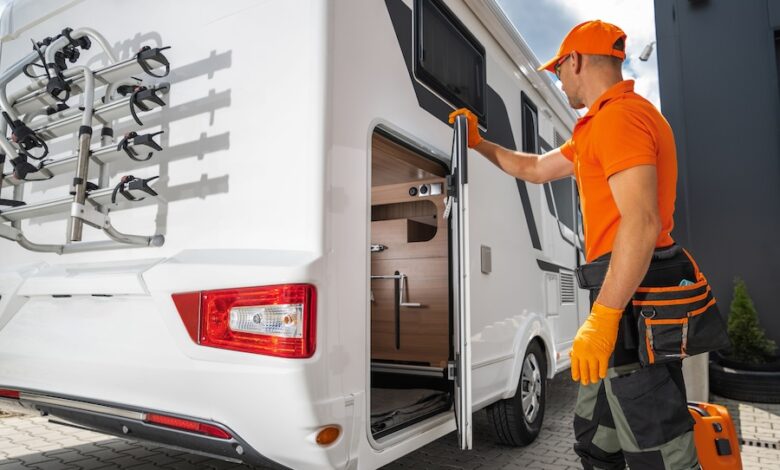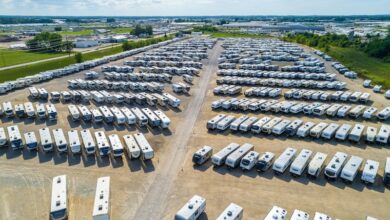Beyond the Sale: The Aftermarket’s Role in a Changing RV Landscape
RV manufacturers and dealers can use the aftermarket to strengthen customer relationships and boost profits.

The RV industry operates to a unique rhythm, distinctly different from other vehicle sectors, which are driven primarily by daily commutes or industrial operations. Unlike standard vehicles, RVs represent a lifestyle choice and are often discretionary purchases influenced more by emotion than necessity. Over the past five years, the industry has experienced a roller coaster of events, particularly during the pandemic, when consumers turned to RVs as a safe alternative for travel. This surge in interest led to skyrocketing prices and significant shortages of available units.
According to the RV Industry Association (RVIA)’s historical data, RV shipments increased by nearly 40% from 2020 to 2021, driven by pandemic-related demand. However, those figures have since dropped sharply, down approximately 18% in 2022 and a further 36% in 2023, returning volumes closer to the levels of the early decade. Even so, there is cause for cautious optimism with the RVIA’s Fall 2025 RoadSigns Forecast projecting a slight increase in wholesale shipments by year-end, with continued growth anticipated into 2026.
Thriving in an Uncertain Economy
Although the RV market is showing early signs of recovery, ongoing economic pressures continue to influence buyer behavior. High interest rates and rising household costs have made many consumers cautious about making large discretionary purchases. Instead of trading in their vehicles, many are opting to hold onto their current ones for longer. Data from broader vehicle markets indicates that the average age of U.S. vehicles has now surpassed 12.8 years, according to S&P Global. In the RV sector, Bish’s RV reports that while some buyers hurried to purchase new RVs ahead of the price increase in June, many others remain hesitant, concerned about financing costs and higher monthly payments.
As a result, dealers and manufacturers are navigating a dual reality — stabilizing demand for new units, while also facing growing pressure to deliver high-quality aftermarket experiences that protect customer loyalty and extend product lifespan.
But meeting this demand is not as straightforward as simply stocking more parts. It requires smarter forecasting, tighter coordination with dealers and more flexible planning. Many companies are rethinking their aftermarket strategies, shifting away from an outdated perception of aftersales service as a logistical challenge to embracing it as a competitive advantage.
Keeping Up With Customers
The traditional buyer-seller relationship has evolved, creating a more nuanced playing field for the aftermarket. What was once a “one-and-done” sales experience now influences how customers feel about a brand long after the initial purchase. Missed service windows, unavailable parts or unclear pricing can all undermine trust. Manufacturers that fail to deliver on service risk more than a one-time complaint; they jeopardize their long-term reputation in a market where word of mouth and brand perception are critical. Given that many RV purchases are emotionally charged and often tied to significant life moments or family memories, the stakes are even higher.
The timely availability of parts is foundational for providing an excellent service experience. When dealers can obtain the right parts at the right time, they can meet customer expectations for quicker repairs, clearer communication and minimal disruption. But in today’s market, maintaining an adequate stock of parts can put a strain on dealer resources. Manufacturers that help dealers optimize inventory — improving availability while minimizing capital risk — are better positioned to strengthen dealer relationships and foster long-term customer loyalty.
The Opportunity Ahead
Despite the evolving landscape, some RV manufacturers continue to manage aftermarket operations using legacy systems and siloed processes. The resulting lack of visibility hampers their ability to identify demand patterns in real-time or anticipate regional shifts in service needs, pointing to a reactive planning strategy that frustrates both dealers and customers.
Today’s most effective strategies are powered by AI and predictive analytics — and with good reason. Research from McKinsey & Co. indicates that the global automotive aftermarket is expected to grow at nearly 3% annually through 2030, driven by digitization, connected vehicles and proactive service capabilities. To capitalize on this growth, RV manufacturers must modernize their aftermarket operations to improve visibility, enable proactive planning and deliver the seamless, high-value service experiences that today’s customers expect.
Although the current environment presents real challenges, it also provides manufacturers with the chance to rethink their approach to the aftermarket and build stronger, deeper customer relationships in the process. Now, more than ever, excelling in the aftermarket is crucial for business success, moving it from a “nice-to-have” to a necessity. Manufacturers that invest in data-driven aftermarket intelligence will be best positioned to navigate uncertainty, empower their dealer networks and earn loyalty in a more demanding marketplace.



